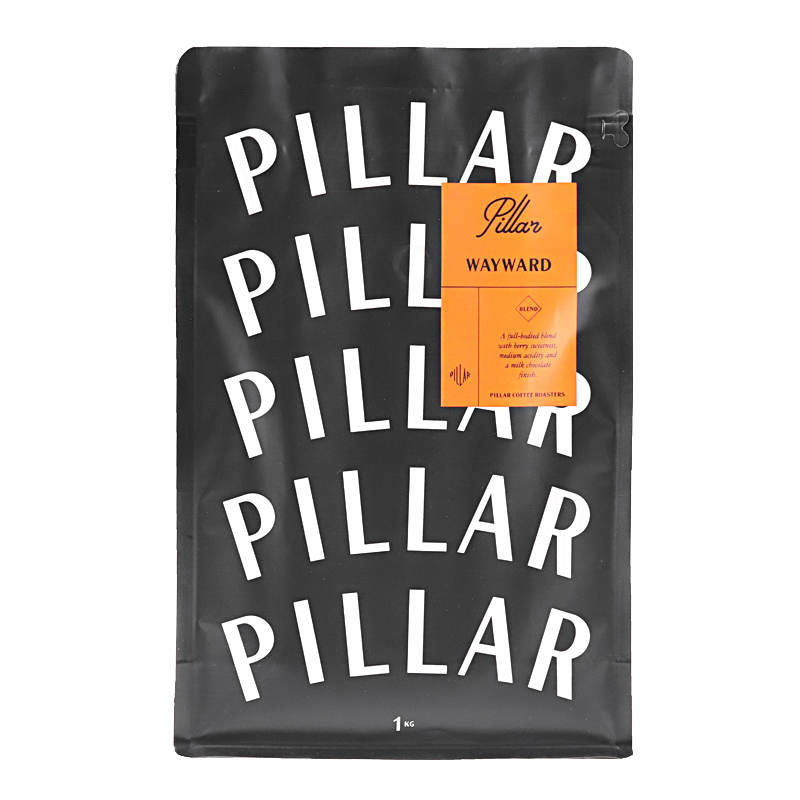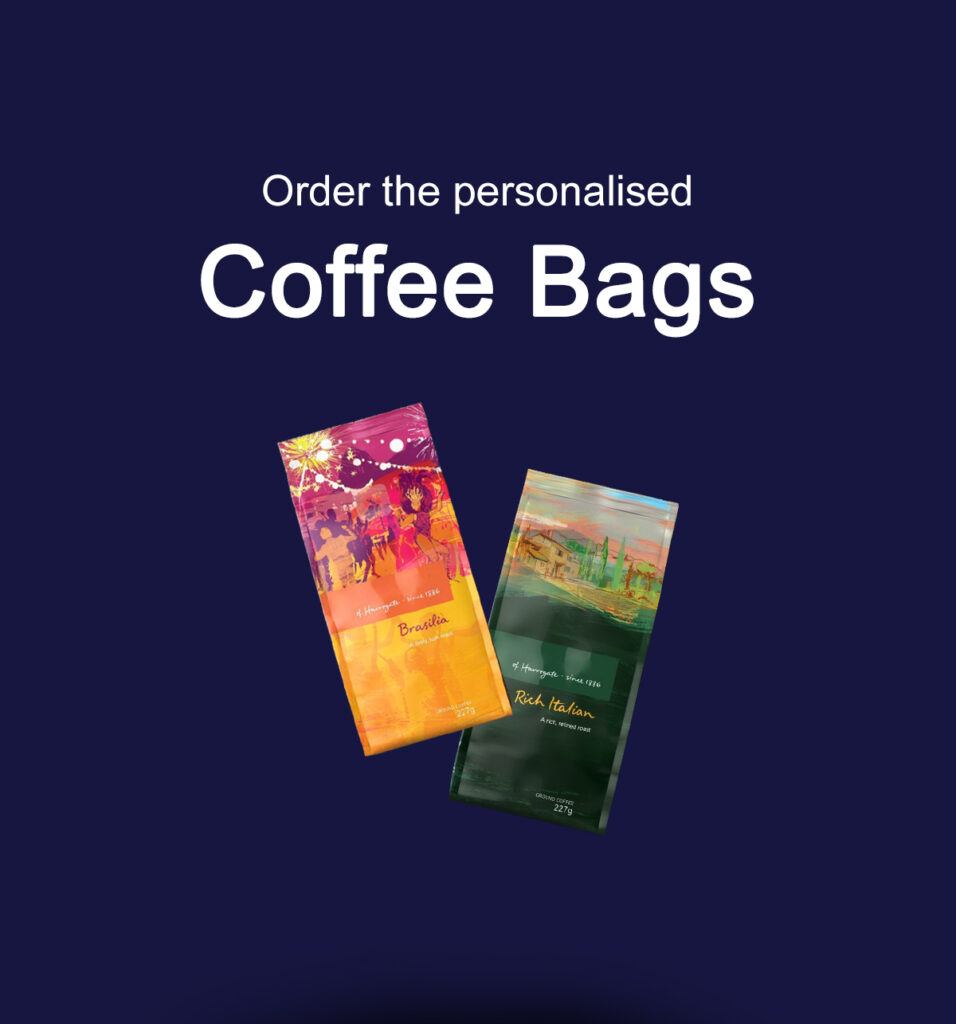Coffee packaging has seen many innovations over the centuries, from beeswax disposal bags in the 1700s to today’s airtight pouches.
Its primary role has always been to safely transport coffee from point A to point B. But as people’s knowledge increased, concerns about maintaining freshness and preventing exposure to external elements led to more and more innovative designs.
The role of packaging as a marketing tool is also evolving. What started out as merely functional grew into a “secret salesman,” a highly effective way to sell a brand and its identity to passing consumers.
1700s to 1860s: The Earliest Forms of Coffee Packaging
While coffee is thought to have been discovered around AD 850, it wasn’t until the 18th century that what we think of as “modern coffee packaging” began to appear.
The earliest forms of packaging date back to 1720. According to Danielle Ohl, during this period, French ground coffee was packaged in greased leather bags or bags with beeswax on the outside. In an article for Viking Masek, she writes that these are often considered “the original form of laminated paper bags” and are designed to “preserve flavor”.
By the end of the century, bags made of “jute” had become the most popular way of transporting large quantities of coffee over long distances. Used to make burlap (or burlap) sacks, jute is a durable and affordable material made from flowering plants. Due to its strength and water resistance, it is still widely used today to transport coffee from its origin to the roastery.
However, the average consumer doesn’t buy sacks full of coffee. Instead, businesses began selling their roasted coffee to stores in narrow-mouth cans and jars, promising to preserve the coffee’s quality for up to a year. People who buy this ground coffee usually take it home wrapped in the most basic everyday materials, from newspaper to small pieces of cloth.
However, it wasn’t until 1812, when Bryan Donkin and John Hall established the first commercial canning factory in Bermondsey, England, that coffee packaging really took off. In addition to providing canned goods to sailors, they also began serving roasted coffee in metal cans.
The concept soon caught on across the Atlantic when New York coffee merchant Lewis A. Osborn introduced “Osborn’s Celebrated Prepared Java Coffee” in 1863, one of the first packaged coffees to be sold directly to consumers.
1870s to 1900s: The Role of Marketing in Packaging
In 1865, American entrepreneur James Arbuckle and his brother Charles patented a process for roasting and coating coffee beans using eggs and a sugar glaze to preserve their flavor and aroma.
Arbuckles’ Ariosa coffee, sold in airtight pound cartons, became an overnight success. The eye-catching yellow labels and big red fonts on the packaging have become a familiar sight to people across the country.
The Arbuckle brothers have also printed signature coupons on coffee bags that can be redeemed for a range of items, including handkerchiefs, razors, scissors and wedding rings. To further promote their coffee, each package also includes a mint to help broaden their appeal to younger consumers.
This marked one of the first uses of coffee packaging as a marketing tool and set a precedent for subsequent coffee brands. Companies like Maxwell House began experimenting with their own branding, adopting the slogan “Good to the last drop” on their logos.
1900s to 1960s: Freshness takes center stage
As more people realize the importance of fresh coffee, manufacturers are looking for packaging that effectively preserves flavor and aroma.
In 1900, R.W. Hills of the Hills Brothers invented vacuum packaging, a process that sucks oxygen out of coffee-filled containers before sealing them. The idea is to keep roasted coffee from oxidation and spoilage.
Hills pioneered the use of vacuum canned coffee, resulting in a fresher product than its competitors. However, it was Francesco Illy who introduced the concept of pressurized packaging containers to the coffee market in 1934.
Designed to preserve freshness by filling the container with an inert gas rather than air, it enabled Illy to export his coffee throughout Europe in the 1940s. For many coffee companies, it remains the most effective way to maintain freshness during shipping.
However, one of the greatest breakthroughs in coffee packaging in the 20th century was the vent valve invented by the Italian company Goglio. Before the Goglio was invented, coffee makers would poke holes in coffee packaging to allow carbon dioxide (CO2) to escape. But that doesn’t prevent exposure to oxygen, which can cause the coffee to go bad.
The degassing valve is a one-way exhaust valve that allows CO2 to escape and not oxygen to enter. Small, attractive and easy to install, it revolutionized coffee packaging and allowed roasters to choose multi-ply bags that prevent exposure to harmful external environments.
1970s to Present: Telling the Story of Coffee Through Packaging
Although somewhat ambiguous, the notion of a “third wave” in coffee culture is often defined as a heightened culinary appreciation for coffee and what it entails. It is thought to have developed after the emergence of Peet’s Coffee and Starbucks in the late 1960s and early 1970s.
One of the core tenets of the third wave is a keen interest in the “story” behind the coffee. Consumers no longer only care about taste; they also want to know about who, where, growing conditions and processing techniques.
Starbucks was one of the first companies to build on this idea by using its packaging. Early on, they realized the role of packaging not only in protecting the coffee, but also in selling the brand and product story.
Along with the centered logo, their bags feature information about the origin and flavor of the coffee, as well as descriptions of the “art” behind growing, roasting and brewing.
As a result, Starbucks set the standard for third-wave roasters when it came to designing coffee packaging. Innovations such as QR codes allow businesses to scale even further, providing consumers with an unlimited amount of information.
More important than origin and flavor information, however, has been the idea of sustainability in packaging since the turn of the century. Growing concerns about the environmental impact of plastic packaging have led many roasters and coffee businesses to look for greener alternatives.
Compostable, recyclable and biodegradable materials such as kraft paper, low-density polyethylene (LDPE) and polylactic acid (PLA) have grown in popularity in recent years.
Manufacturers have also been experimenting with sustainable components and inks as part of this move. For example, recyclable, BPA-free degassing valves and low-VOC water-based inks are increasingly being incorporated into packaging by many specialty bakers.
In 2017, Elevate Packaging introduced the first fully compostable coffee bag to the market. The entire bag is compostable, including the film, zipper and vent valve.
Since the early 1700s, coffee packaging has evolved from simple beeswax-lined pouches to today’s sustainable pouches. As it has grown, so have the priorities of the coffee business and consumers.
Once the sole purpose of packaging was to get coffee from its origin to the consumer, it now serves many different roles, including marketing, preservation and storytelling.
At ECOCOFFEEBAG we understand the important role coffee packaging plays in today’s market. Therefore, we offer a sustainable range of options that can be tailored to include as much information as you need. Our multi-layer options along with recyclable degassing valves will keep your coffee fresh while demonstrating your commitment to sustainability.





